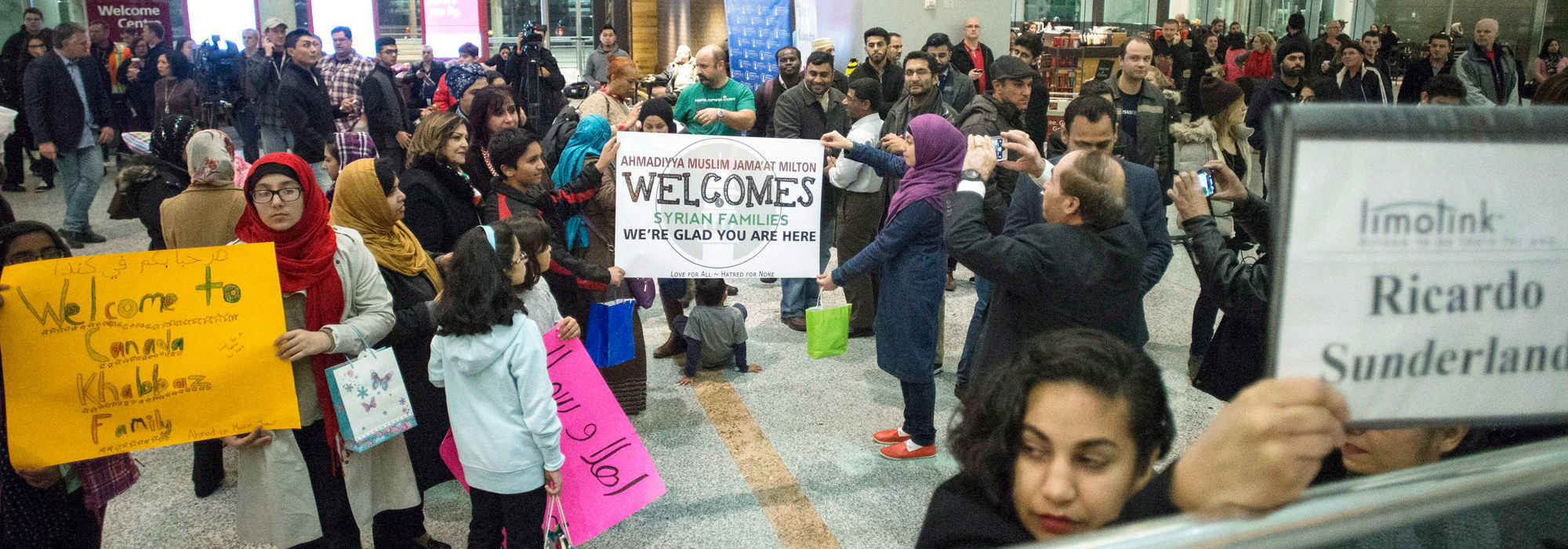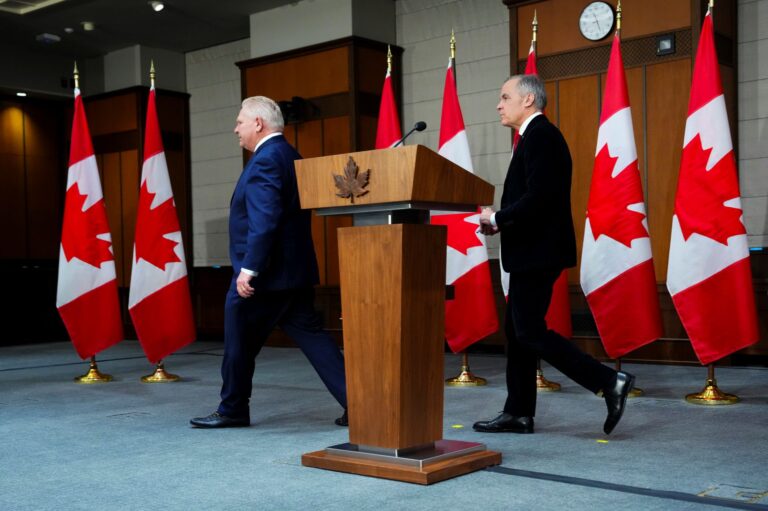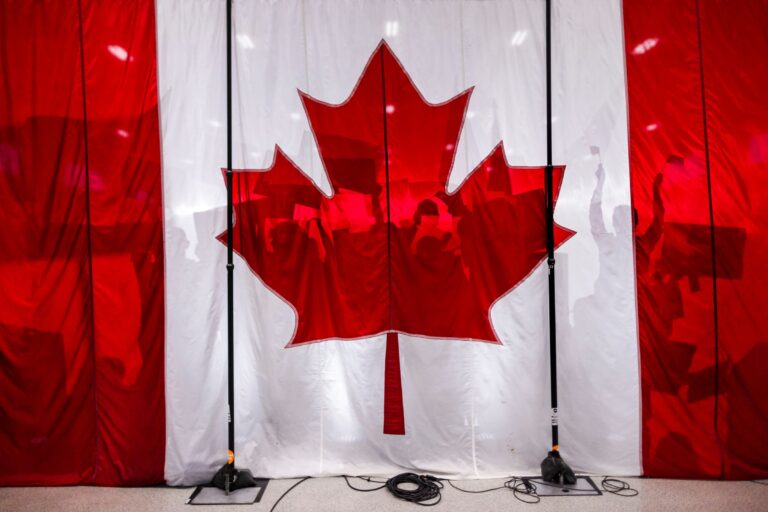A new wave of active citizen involvement in refugee resettlement began in Canada in 2015, when millions of Canadians sprang into action to help the federal government respond to the Syrian refugee crisis. They did it through the Private Sponsorship of Refugees program, which mobilizes groups of citizens to work together in sponsorship groups to raise money, then provide holistic support – financial, emotional, social – to newcomer refugees for 12 months to help them resettle and integrate into a new life. This pioneering program has been active for over 40 years, beginning in 1978 to support refugees of the Vietnam War. It was reinvigorated after Justin Trudeau promised in his 2015 election campaign to admit 25,000 Syrian refugees to Canada by the end of that year.
The program is a success on many fronts and is seen as the “gold standard” in private sponsorship. Canada has begun exporting the private sponsorship model to other countries through the Global Refugee Sponsorship Initiative.
Among the many successes have been the Roncesvalles Refugee Relief, a volunteer-led organization and sponsorship group in Toronto, and the network of academic institutions supporting sponsorship known as the Ryerson University Lifeline Syria Challenge.
But there have been a lot of challenges for those working together to sponsor refugees. Those challenges along with the program’s needs and best practices are in urgent need of a full and deep analysis if Canada is to keep its gold standard and achieve its humanitarian goals.
In 2018, we investigated those challenges and explored what makes sponsorship successful, a question few researchers have studied. Our goal was to gain insight into the refugee sponsorship phenomenon in Canada through interviews with 34 key informants in Toronto, including sponsors from sponsorship groups, settlement sector staff and volunteers and Sponsorship Agreement Holders, which are organizations with signed government agreements to oversee the sponsorship and resettlement of refugees in their community.
We have compiled practical, evidence-based recommendations to improve the program. This study was funded by the Social Sciences and Humanities Research Council and lays the groundwork for the in-depth analysis that is urgently required. Below is a summary of what we found, starting with the earliest stages of the sponsorship process.
The challenges
Even before refugees arrived in Canada, private sponsors faced obstacles in preparing for resettlement. Raising money was the easy part for most. Finding housing, potential language classes, interpreters and multi-lingual doctors were among the most urgent and complicated tasks. During this initial phase, there was a deep frustration felt by many sponsors over the lack of communication with the government representatives controlling the process and the difficulty in contacting them. Sponsors felt that the information provided about the to-be sponsored refugees was insufficient and sometimes inaccurate. And it was slow coming. Sponsors submitted applications and waited long periods for news, some of them losing motivation, their commitment waning, while refugees were often stuck living in precarious and unsafe conditions.
At times, coveted sponsorship spots were lost when circumstances changed (refugees returned to their home countries, for example, or received sponsorship elsewhere). Workers in the settlement sectoruch as social workers, administrators and assistants, said the government had a tendency to abruptly change sponsorship rules without clearly communicating or consulting with those most affected.
When word of resettlement did come, it came with only a few weeks or even days before arriving flights, sparking a mad scramble to prepare housing and other important details, welcoming the families at the airport and booking an interpreter for immediate needs.
Unfortunately, the arrival of the sponsored refugees often brought more challenges, red tape and confusion. Our research participants were often frustrated by logistical issues, which included:
- Difficult decisions related to housing location, along with barriers to availability and affordability (for example: limits on how much sponsorship groups were allowed to spend on housing and finding rentals that newcomers would be able to afford after the first year, when they would be on their own financially);
- Communication impediments and lack of sufficient language programs and translation services;
- Under-employment or unemployment caused by difficulties in language learning and the transference of education or work experience into Canadian equivalents;
- Financial tension over budgeting skills and deciding how to best spend the sponsorship money.
Some sponsors encountered bureaucratic obstacles as they attempted to access money they had themselves raised, with it being held in trust by the government or organizations acting as Sponsorship Agreement Holders. The settlement sector (which provides direct services to newcomer populations) is often under-resourced with overworked staff. Many of the sponsors interviewed felt that there was inadequate monitoring of the day-to-day work of sponsorship groups, with talk of unethical use of sponsorship money and instances of sponsorship breakdown, when a sponsorship group might disassemble and abandon the sponsorship process before completion. Without proper support services and oversight, the sponsorship program seemed to be falling short of ensuring successful resettlement and integration for the newcomers it intended to help. About 25,555 Syrian refugees were admitted to Canada in 2015 and 2016.
Interactions between sponsors and refugees were also at times fraught with tension and misunderstanding. The ideal boundaries to set between sponsors and refugees were often difficult to determine, with sponsors being equally fearful of either compromising the self-determination of newcomers or failing to intervene when needed. This also led to culturally based conflicts. The most common divisive issue included different ideas about time. For example, newcomers tended to have a much more casual approach to appointments than members of sponsorship groups.
Some group members also expressed discomfort about the cultural differences in gender roles and norms, domestic division of labour and acceptability of domestic violence sometimes observed during visits. Sponsorship groups are required to report violence in the home, and that duty brought difficulties to the relationships between sponsors and sponsored. Sponsorship group members found other differences in perspective and cultural understanding difficult to navigate at times. For instance, some sponsored newcomers expressed distress and confusion that some classmates of their children had two moms or two dads. Furthermore, unrealistic and unmet expectations affected the satisfaction of both refugees and sponsors.
Best practices
Ongoing documentation and dissemination of the most effective methods and processes within private sponsorship is lacking. As a result, many sponsorship groups had to “reinvent the wheel” when starting their involvement, taking on tremendous self-guided research and networking to learn how to navigate the system. Here are examples of the frequently cited “best practices” from our interviews:
Pre-arrival period
- The importance of pre-arrival communication between the sponsors and refugees was emphasized repeatedly. This is instrumental in building rapport, managing expectations, understanding needs and including refugees in decision-making.
- Having a sponsorship group composed of diverse members provided many advantages. Key aspects to diversify include professional background, hours of work, age, gender, language skills, cultural/religious/ethnic background, access to a vehicle and previous resettlement experience.
- Assigning specific group members to a sub-group (health or education, for example) was a helpful strategy, particularly if tasks could be aligned with professional knowledge and skill sets. Sponsors also emphasized the importance of knowing each group member’s levels of commitment and availability from the start.
- Working with a Sponsorship Agreement Holder was mostly seen as advantageous, particularly for accessing application expertise. Most also provided beneficial training, troubleshooting and information sharing.
Post-arrival period
- Managing group expectations and ensuring a healthy degree of involvement in the sponsored refugees’ lives was of upmost importance. Most sponsors felt that they ought to allow for self-determination and decision-making by refugees while still adequately supporting them. This delicate balance was particularly important when planning for the transition to self-sufficiency in month 13.
- A successful sponsorship requires clear communication and collaboration both amongst all sponsors and between these sponsorship groups and the newcomers. Roles, rights and responsibilities must be clearly communicated and check-ins should be done regularly. Using a pre-determined method (such as meetings, online forms/calendars, emails or social media groups) was useful for groups to stay up-to-date. Surveys were a tool sometimes used to allow for more formal and thorough check-ins with both the sponsored refugees and group members.
- Many helpful and innovative resources have been developed within the settlement sector but can be difficult to discover and access. Gaining advice from experienced sponsorship groups and/or having group members who were skilled at navigating settlement services were very useful to ensure services and resources were utilized to their full potential.
We urge the government and organizations working within the settlement sector, such as Sponsorship Agreement Holders, settlement agencies, language programs and targeted mental health and employment services, to improve their policies, programs and practices based on the invaluable feedback of sponsors, staff, volunteers and the refugees themselves.
Frustrations aside, members of sponsorship groups agreed unanimously that private sponsorship is worth the effort and ought to be continued with certain remedies. Most people we interviewed were optimistic about the future of the private sponsorship of refugees around the world and of Canada’s continued identity as a welcoming, humanitarian nation. However, to truly realize this national identity, more in-depth analyses and corresponding adjustments of the Private Sponsorship of Refugees program are crucial.
Photo: Shutterstock, By Stacey Newman
Do you have something to say about the article you just read? Be part of the Policy Options discussion, and send in your own submission. Here is a link on how to do it. | Souhaitez-vous réagir à cet article ? Joignez-vous aux débats d’Options politiques et soumettez-nous votre texte en suivant ces directives.













